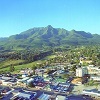LIFESTYLE NEWS - With the summer holiday almost within our sights, we’ll soon start planning our trips to the beach or inland water bodies, or having parties around the pool.
To optimise the safety of people when they are in or near water, the National Sea Rescue Institute has released safety tips that each and every one of us should apply.
“NSRI wishes everyone a safe summer and we urge the public to adopt a water safety mindset around coastal and inland waters,” reads the press release.
“Unfortunately, for various reasons, people regularly swim where there are no lifeguards on duty. This may be on a beach before or after the lifeguard’s duty for the day or at a beach that does not have lifeguards. This is when things can go wrong. In a typical scenario, Sea Rescue gets an emergency call for a swimmer in difficulty and, when we get there, we find two or more people in danger of drowning. Tragically, sometimes we are not able to get there in time and someone drowns.
“Often the person who does not survive is the Good Samaritan who went into the water to try and help a person who was in difficulty.
“Because this happens so frequently, Sea Rescue launched our Pink Rescue Buoy project in November 2017. These bright Pink Rescue Buoys are hung on strategically placed signs and we hope that they will remind people to take care when entering water – and not to swim if lifeguards are not on duty at that stretch of the beach.
“If there is an incident and someone needs help, these buoys can be thrown to the person in trouble in the water, providing them with emergency flotation. There are clear graphics on the sign which explain how to use the Rescue Buoy. And most importantly, the emergency number for the closest Sea Rescue station is printed on the sign. If anyone decides, against advice, to enter the water to try to rescue someone in trouble, first call Sea Rescue and then use the Pink Rescue Buoy to provide flotation for that good Samaritan as well as for the casualty.”
There are three golden rules to apply, always and at every water body:
Golden Rule Number One: Have your cellphone ready to phone for help. For any emergency, you can dial 112 from any cellphone. Make sure you have saved the emergency numbers that you may need on your cellphone. Google Sea Rescue or NSRI for the closest Sea Rescue station’s telephone number. The NSRI Emergency Operations Centre number is 087 094 9774. Get the emergency numbers for NSRI at http://www.nsri.org.za/emergency-numbers/.
Golden Rule Number Two: Choose a beach that has lifeguards on duty and swim between their flags. If you do this, you don’t need to worry about rip currents, or suddenly getting out of your depth. Putting an arm in the air and waving for help will get a rapid response from the lifeguards on duty.
Golden Rule Number Three: Everybody that is going to launch any type of small craft or paddle, should download and always use NSRI’s free SafeTrx app – http://www.nsri.org.za/safetrx
Have a plan in place in the event of an emergency to prevent panic:
- Have your emergency numbers ready on your phone. (Golden Rule Number One)
- Check the wind, weather and tides before going to the beach, fishing or boating.
- Tell someone where you are going and when you are due back, and make sure that they know your route, your intentions and who to call if you are overdue.
- When climbing on rocks or fishing from rocks, never, ever, turn your back on the sea. Rock anglers should wear a life jacket and know when spring high tide is.
- If you are paddling or if you are on a boat, before you launch, download and always use NSRI’s free SafeTrx app – http://www.nsri.org.za/safetrx
Here are some water safety tips to bear in mind this summer:
- Swim at beaches only where and when lifeguards are on duty. (Golden Rule Number Two)
Lifeguards are on duty at selected beaches between 10:00 and 18:00 on weekends and in the week during summer school holidays. Listen to their advice and talk to them about safety on the beach that you are visiting. They are the experts on that beach. If lifeguards are not on duty, do not swim. - Swim between the lifeguard flags. (Golden Rule NumberTwo)
Teach children that if they swim between the lifeguard flags, the lifeguards will be watching them and can help if there is a problem. Lifeguards watch swimmers who are between the flags very carefully – just wave an arm if you need help. - Don’t drink alcohol and then swim.
- Don’t swim alone. Always swim with a buddy.
If you are with a buddy while swimming, there is someone who can call for help if you need it and you can’t wave to the lifeguards or call for help yourself. - Adult supervision and barriers to water are vital.
Adults who are supervising children in or near water must be able to swim. This is vital if it is at a water body that does not have lifeguards on duty. It is extremely dangerous to get into the water to rescue someone, so rather throw something that floats to the person in difficulty and call for help (Golden Rule Number One). Children should not be able to get through or over barriers such as pool fences to water. Only use child-safe pool fences and child-safe pool covers or nets. - Know how to survive rip currents.
If you swim between the lifeguard flags, they will make sure that you are safe and well away from rip currents. If for some reason this is not possible, do not go into the water. Educate yourself about rip currents - there is plenty of educational material at http://www.nsri.org.za/2017/01/beware-of-rip-currents/, including videos of what rip currents look like. - Don’t attempt a rescue yourself.
If you see someone in difficulty, call for help – either a lifeguard, or… yep, you’ve got it - Golden Rule Number One! After calling for help, try and throw something that floats to the person in difficulty. A ball, a foam surf board or something similar. - Watch children who are using floating objects, toys or tire tubes at the beach or on dams very carefully. Never use these if the wind may blow them away from the shallow water. You can very quickly get blown away from the shore and as much fun as tubes and Styrofoam are, it is easy to fall off them. If a child can’t swim and falls off in deep water they will drown.
- Drowning is silent. Watch children when they are in or near water. Do not be distracted by your cellphone or social media while you are looking after children in or near water. You need to focus on them and nothing else. Adults who are supervising children should not be distracted. It is not possible to concentrate on children in the water and be on your phone at the same time.
- Learn how to do CPR.
Boaters and paddlers should use the NSRI RSA SfeTrx free cellphone app (Golden Rule Number Three)
NSRI appeals to everyone launching any kind of craft onto water, coastal and inland, to download and use the NSRI RSA SafeTrx free cellphone app. Have responsible family members monitor your trip using SafeTrx and carry safety equipment.
Download the app at these links: Apple App Store (iPhone, iPad) and Google Play Store (Android).
RSA SafeTrx includes a number of new features for small craft users:
An Emergency Call button which allows you to quickly make a distress call from the application.
Share your real-time track with family and friends during your trip.
Build and maintain your own safety prelaunch checklist.
Choose and alert individual Emergency Contacts for each trip.
Automatically initiates a search process should you not close your trip by your chosen ETA.
The RSA SafeTrx App monitors your boat journey and automatically alerts Emergency Contacts should you fail to return on time.
You can enter your journey details directly from your Smartphone and set off, knowing that at the push of a button you can call for help and should you not return by the time given, your Emergency Contact will be alerted and advised to initiate appropriate action. NSRI RSA SafeTrx is monitored by NSRI EOC and MRCC (Maritime Rescue Coordination Centre). When an Emergency Contact calls the NSRI EOC (Emergency Operations Centre) on 087 094 9774 concerning an overdue trip, they will have access to your location and SafeTrx Trip data through a secure SafeTrx server. Since the RSA SafeTrx app periodically sends your location data back to the NSRI’s servers, the response team can get help directly to you, and quickly.
Other tips for boaters, paddlers and sailors
- Wear bright neon clothing when you launch onto water.
- Have your details: name, contact telephone numbers for yourself and a responsible family member stencilled on your craft.
- Wear appropriate gear for the water temperature and weather conditions forecast by SAWS (SA Weather Service). Monitor SAWS weather forecasts and wear a properly fitting life jacket (children should be fitted into child life jackets).
- Carry red distress flares and know how to use them.
- Carry a cellphone in a watertight plastic sleeve with NSRI RSA SafeTrx downloaded on your phone and always use RSA SafeTrx.
- Make sure your cellphone is properly charged and have a VHF marine radio with batteries fully charged.
- Stick reflective 3M tape on your craft.
- Make sure your craft is in a serviceable and working condition.
- Wear a referee whistle around your neck
- Prepare and brief everyone involved for an emergency before you launch onto water.
ABOUT THE NSRI
The National Sea Rescue Institute (NSRI) is the charity organisation that saves lives on South African waters – both coastal and inland. Its goal is to prevent drowning through rescue operations, education and prevention initiatives.
Operating from base stations along the SA coastline, and on inland dams, its rescue volunteers are on call, at all hours, every day of the year. Its rescue crew receives no payment and neither does it charge the people it rescues.
They visit schools around the country, teaching children about water safety. Their drowning prevention measures include an online training academy, with free courses for crew and the public, emergency signage, Pink Rescue Buoys for emergency flotation, rescue swimmers, lifeguards, and active patrols during peak seasons.
The organisation is totally reliant on donations and sponsorships. This enables them to do the work of saving lives, changing lives, and creating futures.
You can do your bit to assist. Please visit www.nsri.org.za for more information.
'We bring you the latest Garden Route, Hessequa, Karoo news'
















